
SEO mistakes can devastate your affiliate blog’s performance, and you might be making them right now without even knowing it. When your affiliate site isn’t performing as expected, it’s likely due to some common yet devastating SEO errors that are quietly sabotaging your success. Your blog’s visibility in search results depends on avoiding these pitfalls, and the good news is that most of them are completely fixable. In this guide, you’ll discover the top 10 SEO mistakes that could be destroying your affiliate blog’s traffic and learn how to recover your rankings before it’s too late.
Uncover the Mistakes and Boost Your Traffic
Now that we’ve set the stage, let’s dive deeper into the SEO missteps that could be costing you traffic. Each mistake has the potential to undermine your hard work, but recognizing them is the first step toward reclaiming your audience.
To make the process easier, we’re offering an SEO Traffic Boosting Template. This handy tool will guide you in implementing the strategies we discuss. With it, you’ll have a structured approach to fixing these issues and enhancing your blog’s performance.
Let’s explore the top 10 SEO mistakes and how you can fix them, so your affiliate blog can thrive.
Key Takeaways:
- Technical SEO fundamentals like site speed and mobile optimization are crucial for maintaining strong search rankings and reducing bounce rates
- Natural keyword integration and avoiding duplicate content are vital – steer clear of keyword stuffing and copying manufacturer descriptions
- Quality backlinks from relevant sources strengthen your site’s authority, while poor backlink practices can trigger search engine penalties
- Regular content updates and fixing broken links help maintain site credibility and keep rankings stable over time
- Creating content that matches user intent and provides real value is more effective than writing purely for search algorithms
The Silent Killer: Overlooking Technical SEO

Technical SEO forms the foundation of your affiliate blog’s success in search rankings. While you might focus on creating compelling content, ignoring technical aspects can silently destroy your traffic potential. From site architecture to XML sitemaps, every technical element impacts how search engines crawl and index your content. Your affiliate blog needs a solid technical foundation to compete effectively in today’s digital landscape.
The Impact of Site Speed on User Retention
Your site’s loading speed directly affects both user experience and search rankings. Every second delay in page load time reduces conversions by 7%. When you optimize your images, leverage browser caching, and minimize code, you’re not just improving user experience – you’re protecting your affiliate revenue. Modern users expect instant results, and search engines reward sites that deliver.
Mobile-Friendliness as a Ranking Factor
With over 60% of searches now coming from mobile devices, your affiliate blog’s mobile experience can make or break your success. Google’s mobile-first indexing means your site’s mobile version determines your rankings. If your content isn’t easily readable on smartphones or your buttons aren’t tap-friendly, you’re losing both rankings and potential commissions.
To enhance your mobile presence, focus on responsive design that adapts seamlessly across all devices. Implement accelerated mobile pages (AMP) to boost loading speeds on mobile networks. Ensure your affiliate links and call-to-action buttons are easily clickable on smaller screens, and test your site regularly across different devices. Mobile optimization isn’t optional – it’s a fundamental requirement for your affiliate blog’s survival in search rankings.
The Keyword Conundrum: When Too Much Is Too Much
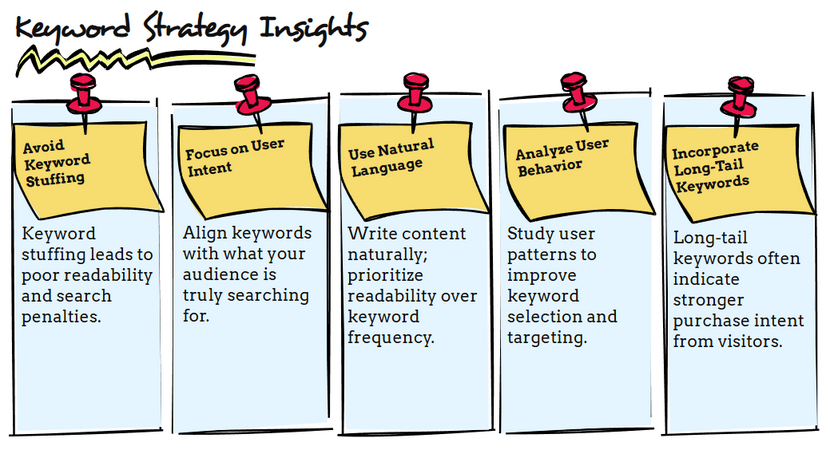
Your success in affiliate blogging hinges on finding the right balance with keywords. While you need keywords to rank, overdoing it can trigger search engine penalties and drive visitors away. Modern SEO requires a sophisticated approach where you focus on natural language patterns and topical relevance rather than keyword density. Understanding how to integrate keywords strategically will help you create content that resonates with both search engines and readers.
The Risks of Keyword Stuffing
When you force keywords into your content unnaturally, you risk more than just poor readability. Google’s algorithms can detect artificial keyword patterns, potentially leading to ranking drops or penalties. Your content starts to sound robotic, destroying user experience and increasing bounce rates. Modern SEO success comes from writing for humans first, while thoughtfully incorporating your target keywords.
Aligning Keywords with User Intent
Your keyword strategy should mirror what your audience is actually searching for. Understanding user intent helps you select keywords that drive qualified traffic to your affiliate content. By matching search intent, you’ll attract visitors who are more likely to engage with your content and convert into customers.
To align your keywords effectively, analyze search patterns and user behavior data. Look for long-tail keywords that indicate buying intent for affiliate content. Tools like Google Search Console can show you which queries bring visitors to your site, helping you refine your keyword targeting. Consider the different stages of the buyer’s journey when selecting keywords, from information gathering to purchase-ready terms.
The Duplicate Content Dilemma: Originality Matters
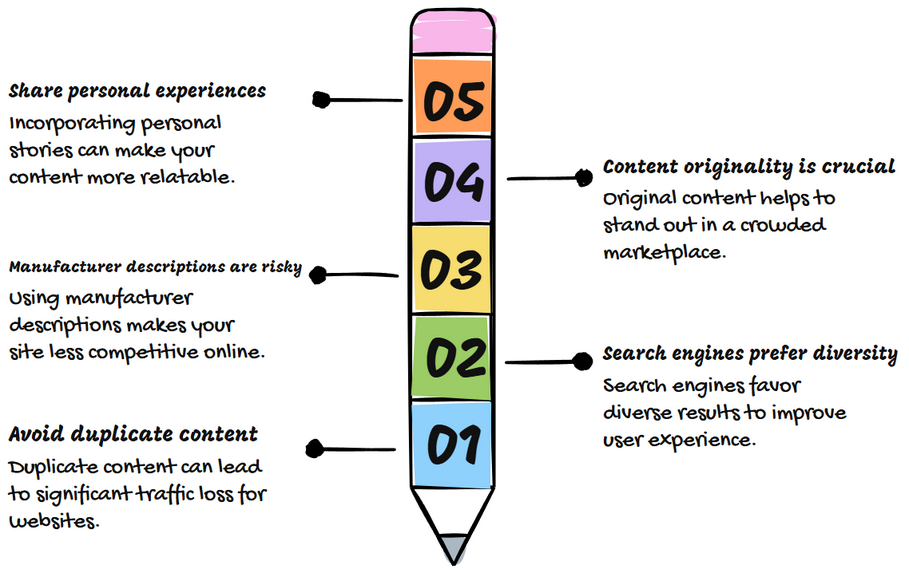
When you copy content directly from other sources or use identical text across multiple pages, you’re setting yourself up for significant traffic loss. Search engines aim to provide diverse results, and duplicate content forces them to choose which version to show, often leading to reduced visibility for your affiliate blog. Creating original content isn’t just about avoiding penalties—it’s about standing out in a crowded marketplace.
Consequences of Relying on Manufacturer Descriptions
Using manufacturer-provided product descriptions puts you in direct competition with hundreds, sometimes thousands, of other websites using the same content. This practice can lead to your pages being filtered out of search results entirely. Your affiliate site risks becoming invisible to potential customers, effectively wasting your time and marketing efforts.
Strategies for Crafting Unique Content
Transform your affiliate content by adding your personal experience with products, including detailed comparisons, and creating custom images. Focus on addressing specific user problems and providing solutions that aren’t found elsewhere. Your unique perspective and insights will help your content stand out and attract more organic traffic.
To make your content truly unique, consider conducting your own product tests, incorporating user feedback, and creating video demonstrations. You can also enhance your content by adding case studies, real-world applications, and specific scenarios where the product excels or falls short. This approach not only helps with SEO but also builds trust with your audience and increases conversion rates.
Backlink Anxiety: The Quality Over Quantity Debate
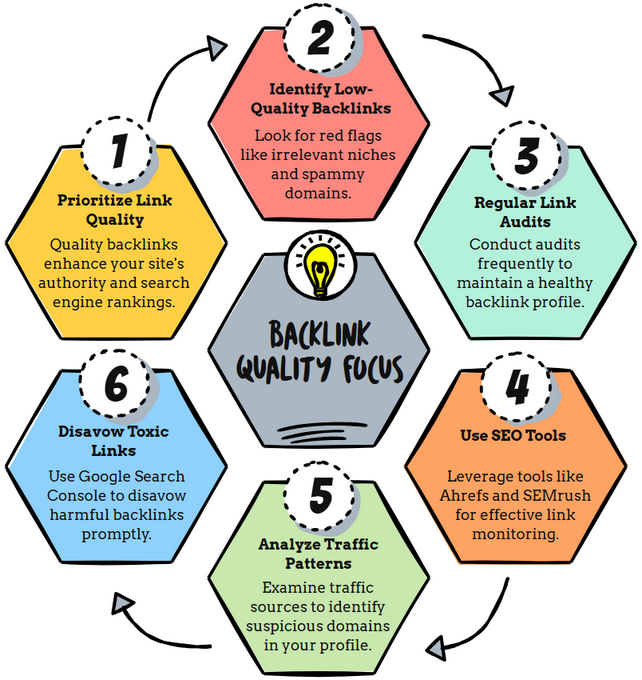
Many affiliate marketers fall into the trap of chasing backlink numbers while ignoring quality. Your backlink strategy should focus on acquiring relevant, authoritative links rather than accumulating hundreds of low-value ones. Search engines have become increasingly sophisticated at detecting artificial link building, making it more dangerous than ever to pursue quantity over quality in your backlink profile.
Identifying Low-Quality Backlinks
You can spot problematic backlinks by looking for specific red flags in your link profile. Watch out for links from irrelevant niches, spammy domains, or sites with suspicious traffic patterns. Your backlink health depends on avoiding connections with websites that have poor domain authority, thin content, or are part of obvious link schemes.
Effective Backlink Audit Techniques
To maintain a healthy backlink profile, you need to regularly audit your links using reliable SEO tools. Start by analyzing your link sources, anchor text distribution, and referring domains. When you find toxic backlinks, take immediate action to disavow them through Google Search Console to protect your site’s authority.
Your backlink audit should include examining metrics like domain authority, trust flow, and citation flow. Create a spreadsheet to track your findings and prioritize action items. Focus on maintaining relationships with quality referring domains while systematically removing harmful links. Tools like Ahrefs, Majestic, or Semrush can help you monitor your backlink profile’s health and identify potential issues before they impact your rankings.
The Anatomy of On-Page SEO: Essentials for Visibility
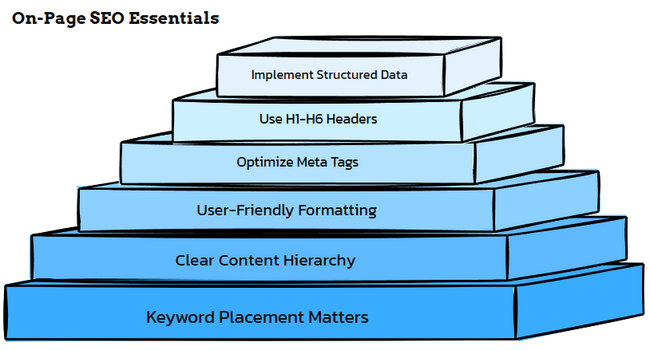
Your on-page SEO serves as the foundation for your affiliate blog’s search visibility. By properly structuring your content with strategic keyword placement, clear hierarchy, and user-friendly formatting, you can significantly improve your chances of ranking higher in search results. Make sure your content follows current SEO best practices to help search engines understand and properly index your valuable affiliate content.
Importance of Meta Tags and Headers
Meta tags and headers act as signposts for both search engines and readers. Your title tags and meta descriptions are your first opportunity to attract clicks from search results. Using properly structured H1-H6 headers helps break down your content into scannable sections while establishing topical relevance for search engines. Well-optimized meta elements can improve your click-through rates and overall search visibility.
Utilizing Structured Data for Enhanced Rich Snippets
Implementing structured data markup on your affiliate blog helps search engines better understand your content context. When you add schema markup, you increase your chances of getting rich snippets in search results, which can significantly improve your visibility and click-through rates. Focus on product reviews, ratings, and price schema for maximum affiliate content impact.
Schema markup comes in various formats suitable for affiliate content, including Product, Review, and FAQ schemas. By implementing these correctly, you can make your affiliate content stand out in search results with enhanced visual elements like star ratings, prices, and availability information. This additional context helps potential buyers make informed decisions directly from search results, potentially increasing your conversion rates and overall traffic quality.
Navigating User Intent: Building Trust Through Relevance
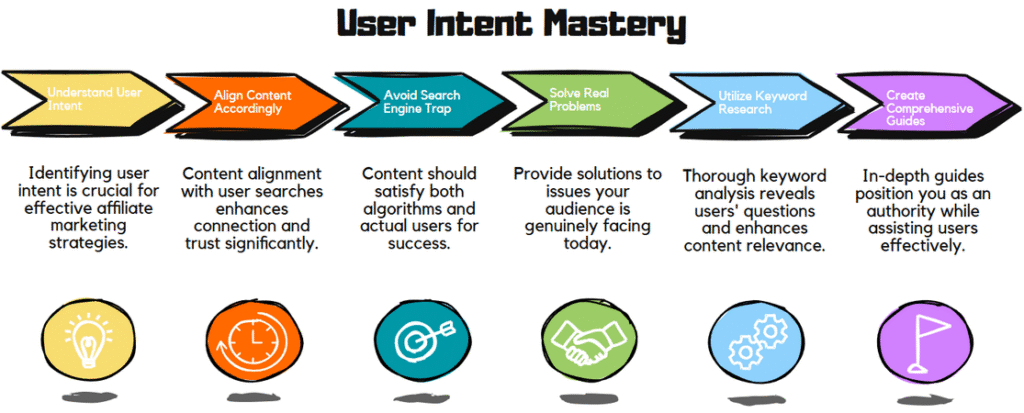
Your success in affiliate marketing hinges on understanding and meeting user intent. When you align your content with what your audience is actually searching for, you create a powerful connection that drives both traffic and conversions. Missing the mark on user intent can lead to high bounce rates and lost opportunities, making it one of the most damaging mistakes in affiliate SEO.
The Disconnect Between Algorithm and Audience
You might be falling into the trap of creating content that pleases search engines while forgetting about real readers. This disconnect occurs when you focus too heavily on technical optimization at the expense of user experience. Your content needs to serve both masters – satisfying search algorithms while providing genuine value to your audience.
Techniques for Optimizing Content for Real Users
To optimize your content effectively, you need to focus on solving real problems and answering specific questions your audience is asking. Start by analyzing search intent behind keywords, creating comprehensive guides, and maintaining a natural, conversational tone that resonates with your readers.
When implementing these techniques, ensure you’re conducting thorough keyword research to understand the questions behind the searches. Use analytics data to track user behavior and adjust your content strategy accordingly. Your content should guide users through their journey, from awareness to purchase decision, while maintaining authenticity and providing valuable insights that set your affiliate site apart from competitors.
The Broken Link Trap: What You Need to Fix
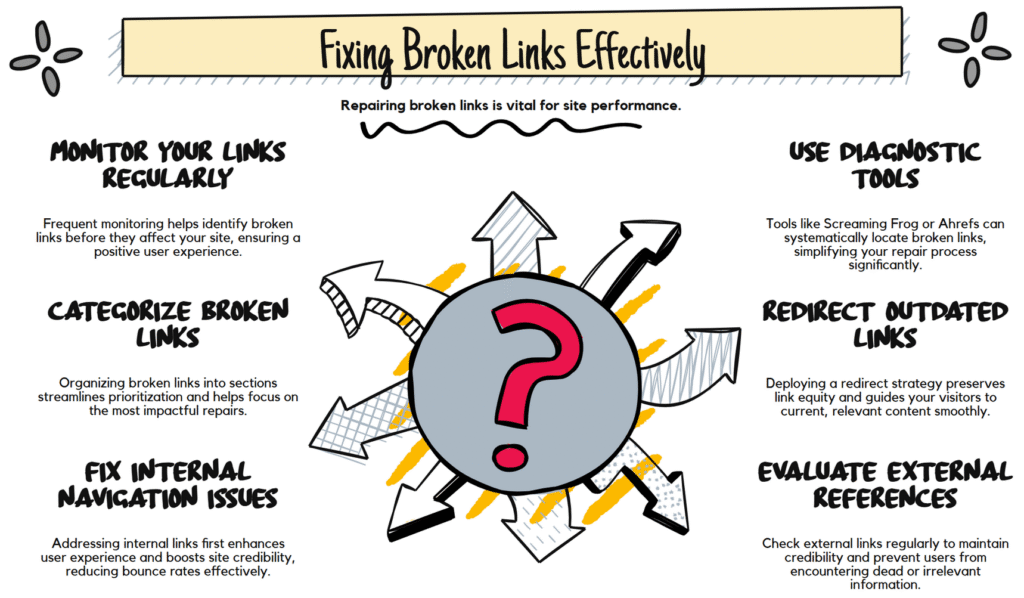
Broken links are silent traffic killers that can devastate your affiliate blog’s performance. When you leave dead links unattended, you’re not just frustrating visitors – you’re actively damaging your site’s credibility and search engine rankings. Your affiliate links, product references, and internal navigation need constant monitoring to maintain a healthy site structure and preserve your SEO value.
Assessing the Damaging Effects of Broken Links
Your broken links create a negative ripple effect throughout your site’s performance metrics. Each dead link wastes your crawl budget, increases bounce rates, and signals poor maintenance to search engines. When visitors encounter broken affiliate links, you’re not just losing immediate sales – you’re pushing away potential long-term readers and damaging your site’s authority in your niche.
Tools and Techniques for Identifying and Repairing Links
You can easily detect and fix broken links using tools like Screaming Frog, Ahrefs, or Google Search Console. Regular link audits help you identify problematic URLs before they impact your rankings. Set up automated monitoring systems to catch broken links early, and maintain a redirect strategy for outdated affiliate links to preserve link equity.
When fixing broken links, you should prioritize your most valuable pages first. Create a systematic approach by categorizing broken links into internal navigation issues, expired affiliate offers, and dead external references. For affiliate links that frequently change, consider using a link management system to update multiple links simultaneously and maintain accurate tracking.
The Mobile Optimization Mandate: Adapting to User Behavior
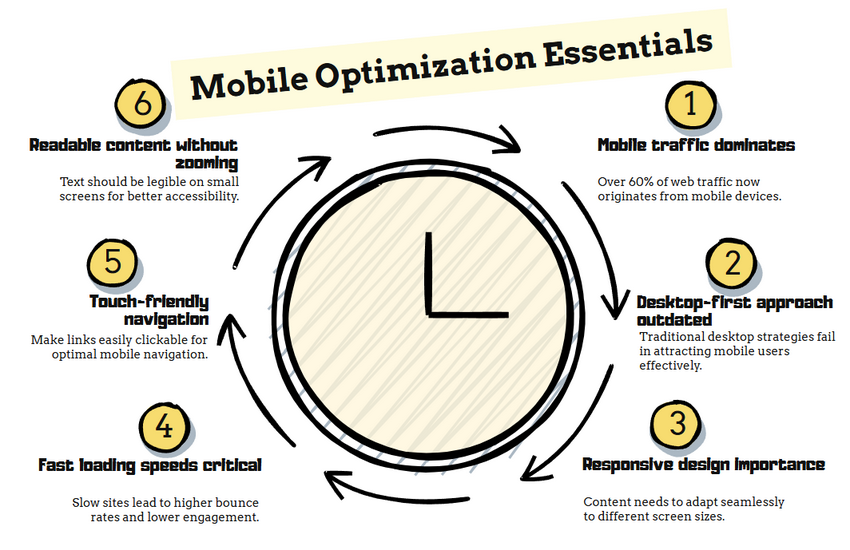
Your affiliate blog’s success hinges on meeting your audience where they are – on their mobile devices. Failing to optimize for mobile can cost you up to 70% of potential traffic, as search engines now prioritize mobile-friendly content in rankings. You need to adapt your content strategy to match the way your visitors consume information on smaller screens, or risk becoming invisible in search results.
The Shift Towards Mobile Consumption
Your audience has moved decisively to mobile browsing, with over 60% of all web traffic now coming from mobile devices. This shift means your traditional desktop-first approach is outdated. If your affiliate blog isn’t delivering a seamless mobile experience, you’re likely seeing higher bounce rates and lower engagement metrics, directly impacting your search rankings and affiliate commissions.
Best Practices for Effective Mobile Optimization
To capture mobile traffic effectively, you need to focus on responsive design, fast loading speeds, and touch-friendly navigation. Your content should be easily readable without zooming, and your affiliate links must be easily clickable on smaller screens. Testing your site across different devices ensures you’re not losing valuable traffic to poor mobile experience.
Consider implementing Accelerated Mobile Pages (AMP) for your blog posts, which can improve loading times by up to 85%. Your images should be properly compressed and sized for mobile viewing, and your site’s layout should adapt smoothly to different screen sizes. Using mobile-specific features like click-to-call buttons and location-based services can enhance user experience and increase conversion rates on your affiliate offers.
The Strategy Void: Why Planning Is Non-Negotiable

Operating your affiliate blog without a clear SEO strategy is like sailing without a compass. Random, uncoordinated SEO efforts can waste your resources and actually harm your rankings. You need a well-structured plan that aligns your content creation, keyword research, and link-building efforts with your business goals to achieve sustainable traffic growth.
The Dangers of Ad-Hoc Approaches
When you tackle SEO tasks randomly, you risk missing critical opportunities and making costly mistakes. Ad-hoc approaches often lead to inconsistent results, wasted resources, and potential ranking penalties. Your competitors with structured strategies will consistently outperform your scattered efforts, leaving you struggling to catch up in search rankings.
Developing an Ongoing SEO Strategy for Long-Term Success
To secure lasting success, you must develop a comprehensive SEO strategy that evolves with market trends and algorithm updates. Your plan should include regular content audits, competitor analysis, and performance tracking. By maintaining a systematic approach, you can build sustainable traffic growth and strengthen your affiliate blog’s authority.
Your strategy should encompass quarterly goals, monthly content calendars, and weekly optimization tasks. Focus on creating data-driven decisions by tracking key metrics like organic traffic, conversion rates, and keyword rankings. Set up systems to monitor your backlink profile, conduct regular technical audits, and adjust your approach based on performance analytics. This structured method will help you maintain consistent growth while staying ahead of algorithm changes.
To wrap up
Conclusively, by addressing these ten SEO mistakes, you can transform your affiliate blog’s performance and boost your search rankings significantly. Your success in affiliate marketing depends heavily on your ability to implement proper SEO practices. When you optimize your site correctly, create unique content, maintain healthy backlinks, and stay current with mobile optimization, you’ll see your traffic grow. Taking action on these improvements will help you build a stronger foundation for your affiliate business and ensure your content reaches its intended audience effectively.
FAQ
Q: How does poor site speed affect my affiliate blog’s performance?
A: Slow loading times directly impact your search rankings and user experience. When your site takes more than 3 seconds to load, visitors are likely to leave, increasing bounce rates by up to 90%. Google considers site speed as a ranking factor, so a slow website can significantly reduce your organic traffic and affiliate conversions.
Q: Why is my affiliate blog not ranking despite having lots of content?
A: Your content might be suffering from keyword cannibalization or duplicate content issues. Using manufacturer descriptions without modification, targeting the same keywords across multiple posts, or having thin content can prevent your pages from ranking well. Create unique, in-depth content for each topic and use distinct keyword strategies for different pages.
Q: How often should I update my affiliate blog content to maintain rankings?
A: Regular content updates are important for maintaining search rankings. Review and update your high-performing posts every 3-4 months, checking for broken links, outdated information, and expired offers. For seasonal content, schedule updates at least 1-2 months before peak seasons to ensure relevancy and accuracy.
Q: What makes backlinks harmful to my affiliate site’s SEO?
A: Backlinks from spammy websites, irrelevant niches, or paid link schemes can trigger Google penalties. Low-quality backlinks, especially those from link farms or websites with adult content, can damage your domain authority. Focus on earning natural backlinks from reputable sites within your niche through quality content and genuine relationships.
Q: How can I improve my affiliate blog’s mobile optimization?
A: Start by implementing responsive design that automatically adjusts to different screen sizes. Ensure text is readable without zooming, buttons are easily clickable, and images are properly sized for mobile devices. Use Google’s Mobile-Friendly Test to identify specific issues, and optimize page load times specifically for mobile users through image compression and minimal code.
